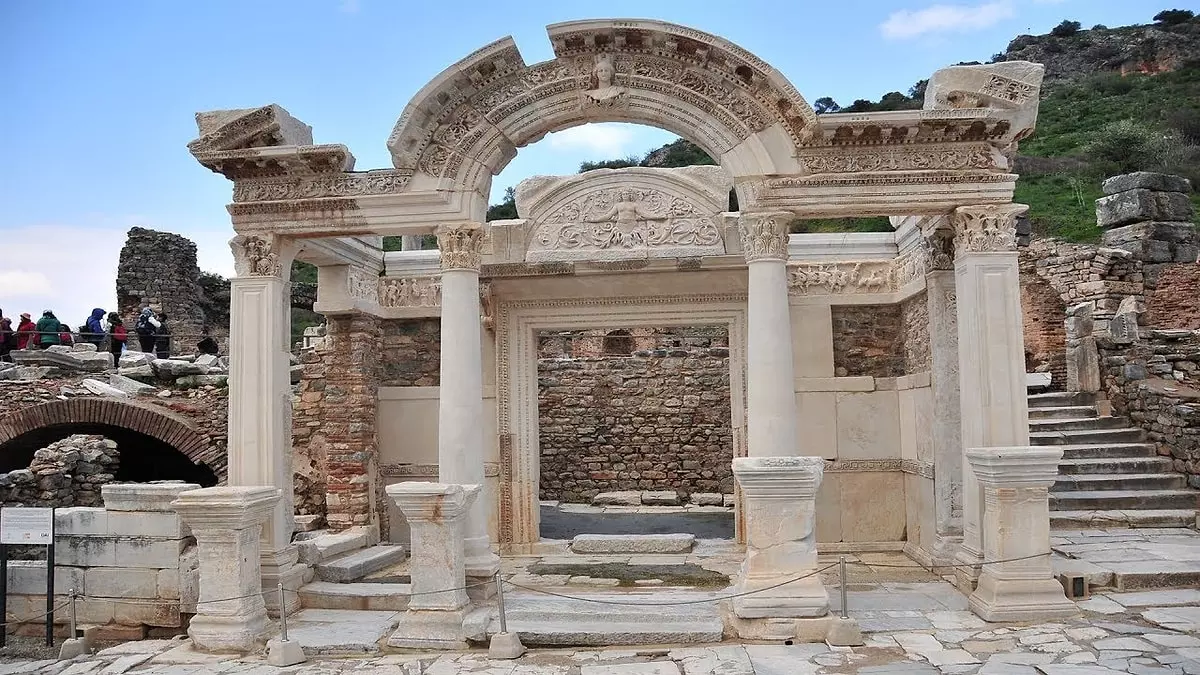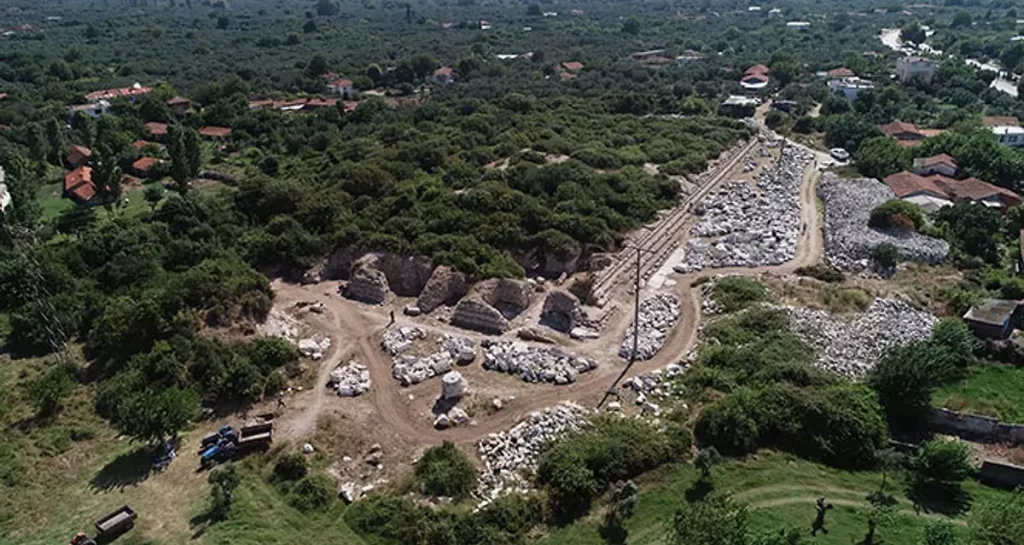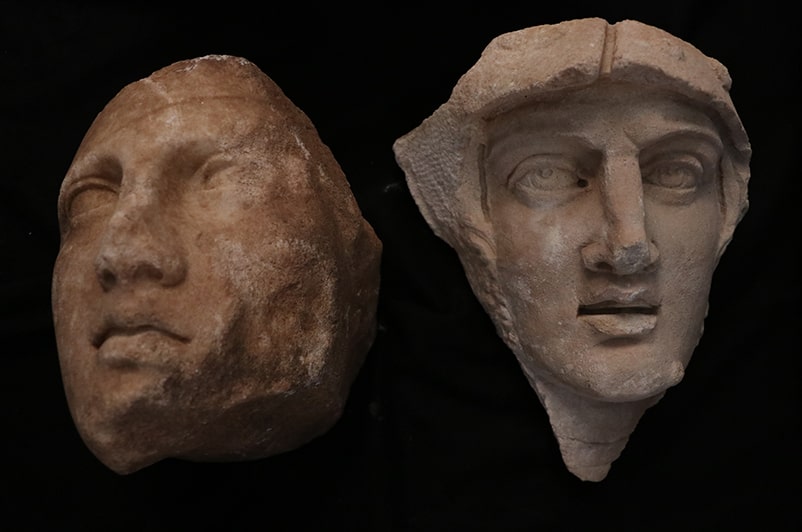
Kyzikos Ancient City, named after the Hylas legend in Greek mythology
Kyzikos Ancient City is situated at the foothills of Mount Kapıdağ within the borders of Balıkesir province, where the Bandırma-Erdek highway passes.
Research conducted by Kurt Bittel revealed traces of human settlement dating back to the Neolithic period (6th millennium BC) and Chalcolithic period (5th millennium BC).
The Doliones, who initially settled on the slopes of Olympos (Uludağ) in Mysia and later descended to the Aisepos Plain or migrated from Thessaly to this region, were the oldest known community to inhabit Kyzikos. Hence, this region is also referred to as Dolionia or Dolionis.
Kyzikos takes its name from the myth of the Hylas in Greek mythology.

In this tale, as the Argonauts set out from Greece in pursuit of the Golden Fleece located in Georgia (Colchis), they stop by Dolionia (Kyzikos) along the way.
King Kyzikos warmly receives the Argonauts, providing them with food, drink, and ample supplies before bidding them farewell. However, on their journey, the Argonauts encounter a storm and land ashore. In the darkness of night, unaware that they have returned to the lands of Dolionia, the Argonauts mistake King Kyzikos and his people for enemies, engaging in a battle.
Unfortunately, in this conflict, King Kyzikos is killed, leading the city to be named Kyzikos in commemoration of his death.

“After the death of Kyzikos, the Tirrhenian Pelasgians invaded the city. As a colony of Miletus (located in present-day Söke-Balat Village) and one of the significant Ionian cities for a time, Kyzikos continued under the rich Lydia State until its destruction by Cyrus in 546 BC, falling under Persian rule. Gaining independence in 364 BC, Kyzikos came under Macedonian rule after the victory of Alexander the Great over the Persians in 334 BC. In the 3rd century BC, Kyzikos gained substantial importance due to its location along trade routes in the Sea of Marmara and established good relations with Pergamon, becoming a hub of science and culture. With Pergamon falling into Roman hands, Kyzikos also allied with the Romans but eventually came under their rule.
When Constantine made Byzantium the capital of the Eastern Roman Empire in 324 AD, Kyzikos gradually declined. Frequent earthquakes and invasions led to Kyzikos bidding farewell to its glorious days, eventually fading away from history’s stage.”

Temple of Hadrian, the eighth wonder of ancient time
Four temples were unearthed during archaeological excavations in the City of Kyzicus. The largest and most important of these temples is the Temple of Hadrian.
The Temple of Hadrian, located in the west of the Ancient City of Kyzikos, is currently located in Düzler Locality of the Bandırma-Erdek highway, approximately 300 m inland from the highway.
The construction of the Temple of Hadrian started in the name of God Zeus but could not be completed. Its construction was restarted after Emperor Hadrian visited the city after an earthquake in 123 AD. Its completion took place only during the Antonine Period (AD 138-197). M.S. A new earthquake between 150-155 caused great destruction in the temple, and A.D. It was repaired again in 167.
The temple, which was listed as the eighth wonder of the world in ancient times, was built in A.D. 6th century It was completely abandoned after the earthquake in .
You may also like
- A 1700-year-old statue of Pan unearthed during the excavations at Polyeuktos in İstanbul
- The granary was found in the ancient city of Sebaste, founded by the first Roman emperor Augustus
- Donalar Kale Kapı Rock Tomb or Donalar Rock Tomb
- Theater emerges as works continue in ancient city of Perinthos
- Urartian King Argishti’s bronze shield revealed the name of an unknown country
- The religious center of Lycia, the ancient city of Letoon
- Who were the Luwians?
- A new study brings a fresh perspective on the Anatolian origin of the Indo-European languages
- Perhaps the oldest thermal treatment center in the world, which has been in continuous use for 2000 years -Basilica Therma Roman Bath or King’s Daughter-
- The largest synagogue of the ancient world, located in the ancient city of Sardis, is being restored











Leave a Reply